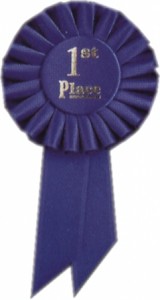Artist Jonny Niesche and The Art Life proudly presented a collaborative essay writing competition in conjunction with Mr. Niesche’s just completed exhibition in Sydney at MOP. To win one of his handsome paintings all entrants had to win was complete an essay partially written by Sean Lowry by filling in the blanks. And they did in their dozens. After a long process and close evaluation, Ron & George Adams declared the perhaps-appropriately named Stephanie Quirk the winner. Read on below for the winning entry – Mr. Lowry’s text in bold, Ms. Quirks in regular font. Ms. Quirk wins Niesche’s Galdr of Freyja, a beautiful painting that she will no doubt treasure as it brings her many years of enjoyment.
By Stephanie Quirk and Sean Lowry
A growing perception that painting has had its last nail thrust in the coffin and is being lowered into the grave marked Postmodernism. This latest resurgence in painting suggests that indeed the end is the beginning. The work of Sydney based painter Jonny Niesche exemplifies through his use of figuration and gestural abstraction that there are realms of in painting yet to be investigated. Contemporary art is about finding a reason to paint, despite its thick history and recent competition in forms of electronic and temporal art. Although painting has been labeled dead by such theorists as Yves Alain Bois, Niesche has injected it with his glitter syringe to resurrection. The tension between Niesche’s use of satire and the paintings ‘camp-ness’ enables them to shine though any pedestrian cliché or indeed ‘glitter’! What is Niesche’s angle? Is it perverse or humor that gives his paintings a new sense of sensuality? Glitter, bright colours, mirrors, resin, packing tape and the use of syringes, coupled with fluid lines and shapes all playfully suggest that Niesche has fallen for the act of painting itself, making a love affair to remember. What does this then predict for the new insurgence of painting in the 21st century?
Unlike the stylistic permutations that defined the evolution of painting, Niesche has combined them all, mythical landscapes and figures swirl in pools of glossy hues. Niesche’s perception of painting on the other hand, appears to be driven by an energetic sense of gusto and love of the act. Faux Nordic sensations and imagery are all used ironically to extend the perceptual depth of the canvas juxtaposing the obvious surface interface. This awareness of painting as a tool for communication such as an external expression of self awareness. Yet such an approach is also concerned with painting as a communicable tool in a post-painterly era. This exhibition nestles itself between entertainment, visual pleasure and intellectual banter. Once completing his studies at S.C.A. his practice was free to mutate within the confines of his limitless imagination , part Nordic shamen, part shiny cowboy, or even ‘glitter sticks’ and bubblegum colours! This camp sense of mythology becomes a way to re-learn the art of pure colour pleasure and sensation. Niesche re-kindles in his campsite the love for painting! Of course this strategy of ostentatiousness ultimately is secondary when it becomes apparent that these painting are far from one line jokes. In this sense Niesche both is and is not greatly satirical or stonely reflective.
What is it that makes a painter contemporary? Is it the mediums employed or the way that one employs them? The shifting nature of contemporary painting is a phenomenon from which Niesche investigates through his use of changing depth on the canvas surface. After we enjoy this guilty pleasure of viewing let us not forget that Niesche’s painting contains not answers to the questions of contemporary art and its continuous births and deaths, material production becomes secondary to explorations of art practice to counter the cultural currency of disciplinary ‘purity’ as the quintessential attribute that painting has forgone its heyday. In short Niesche’s approach to his work is as enjoyable as the act of describing it. In the words of the Eastern philosopher Dogan ‘ the end is the beginning’.


It might sound like sour grapes, in that my attempt, which I incidentally emailed to Sean Lowry in the U.S., and to which he responded, “Love it!”, failed to win the coveted prize, but as an English teacher I have to say that the winner’s effort on many occasions doesn’t even make grammatical sense! There are clauses that go nowhere for instance. The very first sentence is an example of this, but there are many. The sentence starting “The tension between……” is another that makes no sense whatsoever – or did she mean to write ‘through’? In the last sentence of the first paragraph, did she mean resurgence and not insurgence? If it’s the latter, than this does follow from the sentence preceding it. Or in the last paragraph, the sentence beginning “The shifting nature of contemporary painting……..” when using the preposition given by Mr. Lowry (from) becomes meaningless and an example of very poor expression.
I could go on but I suppose you’ve stopped reading.
Was it an ‘inside job’?
I am very upset and disappointed, because I thought that if I were to get trumped, at least I would get a good read – that is, intelligent yet amusing.
Pingback: Tweets that mention We have a winner! | The Art Life -- Topsy.com
It’s the art world – everything is always an inside job!!!
sour grapes indeed.